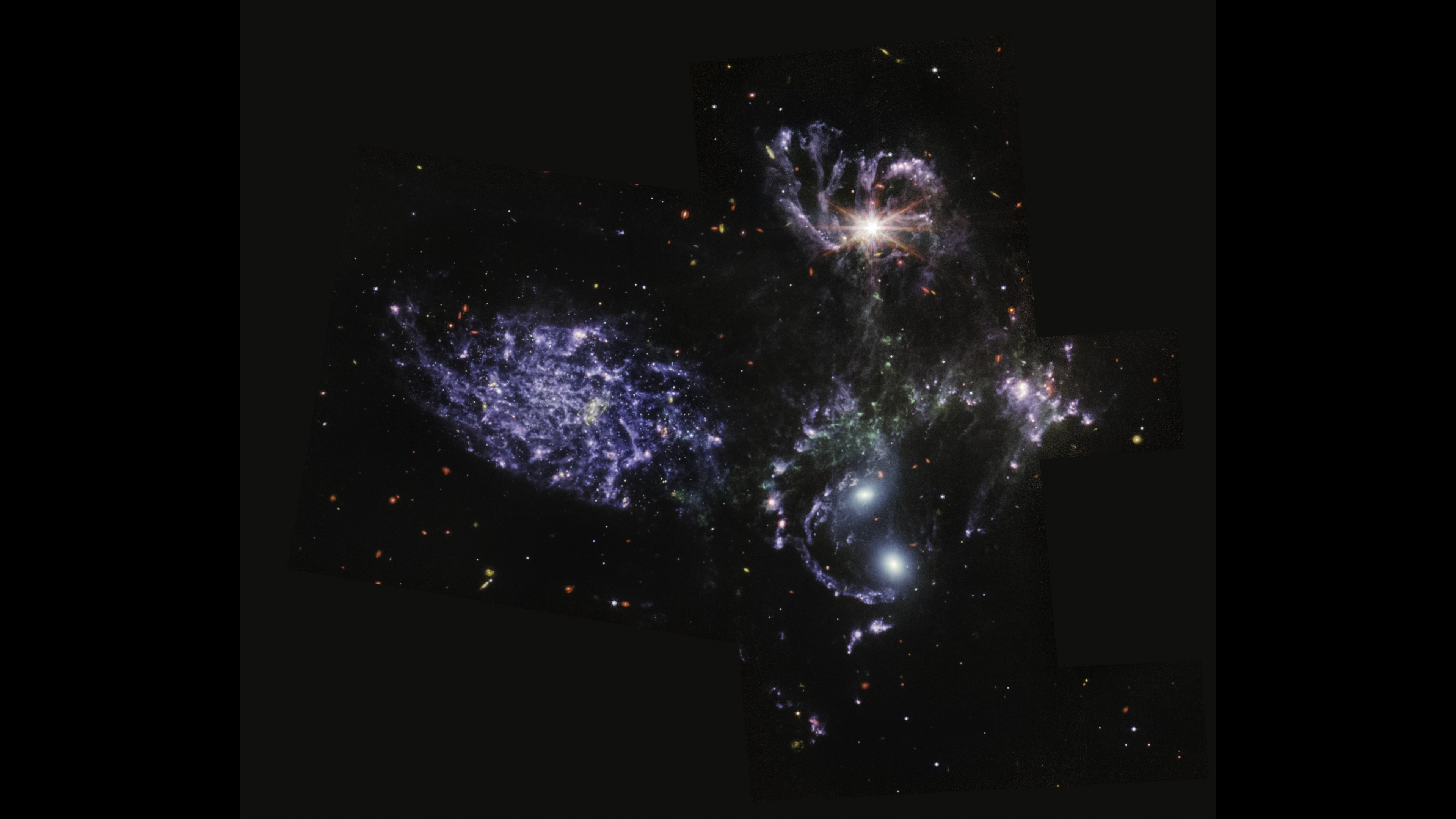With the James Webb Space Telescope in full operations, scientists look to reveal the earliest galaxies
The images and data will help us understand how galaxies evolve.

The past is a foreign galaxy, and NASA's brand-new observatory will be our tour guide.
On July 11, President Joe Biden released the first official image from the James Webb Space Telescope (Webb or JWST): a stunningly sharp deep field view into a distant past. But there's more time-traveling to come, as scientists hope the observatory will allow us to see some of the universe's first galaxies.
"I'm excited for… seeing the first 400 million years of the universe. We've yet to see a single thing [showing] what it looked like back then, and we're gonna get our first view of that with JWST," Dan Coe, an astronomer at the Space Telescope Science Institute in Baltimore, told Space.com. "We're also going to see what galaxies looked like in the early universe."
Related: NASA's James Webb Space Telescope mission: Live updates
Gallery: James Webb Space Telescope's 1st photos
When scientists started working on Webb over two decades ago, one of the mission's primary goals was to see the first galaxies in the universe. These galaxies, so far away that their light takes billions of years to travel to the Earth, are cosmic relics — preserved, in our view, exactly as they looked near the beginning of the universe, when the light now reaching Earth first left the distant galaxies. No one knows for sure what these relics will look like — and Webb's scientists can't wait to find out.
Webb will be able to reveal these galaxies for the first time because of its incredible sensitivity and its ability to see in infrared light. Picture the universe as it was billions of years ago. As light streamed out of stars and began traversing space, the universe gradually expanded around those stars, making any given star much more distant from Earth today than it was eons ago. As a star became more distant, the wave pattern of its light stretched like a Slinky, lengthening the wavelengths of light in a phenomenon astronomers call "redshift": Wavelengths we humans see as blue light stretch to redder light, and wavelengths of visible light stretch to infrared light.
Humans can't see infrared light, and neither can telescopes like the venerable Hubble Space Telescope that are tuned to visible and ultraviolet light. But Webb can see old starlight that has been red-shifted so far that it has become infrared
Breaking space news, the latest updates on rocket launches, skywatching events and more!
"[Webb] goes to longer wavelengths, then we can see before with Hubble, so we're able to see farther back in time," Coe said. (Webb is also larger and more sensitive than Hubble, enabling it to detect very faint light and making it even better suited to studying the most distant galaxies.) "We're also able to see the full picture of these early galaxies."
That picture will include what these galaxies actually look like. Scientists think that the earliest galaxies might be much smaller and more chaotic than modern galaxies. The small, disorganized clusters of stars merged to form more complex shapes, such as our Milky Way's spiral, the theory goes, and the collisions could also have triggered new star births.
"When galaxies collide, they don't go bang, they kind of go slosh," Jonathan Gardner, deputy senior project scientist for Webb, said during a media event held in late June. "Because galaxies are mostly empty space, the stars themselves rarely collide with each other. But the gas does collide and can trigger bursts of star formation, forming the next generation within the final merged galaxy."
In Webb's first year, several research projects will focus the observatory's gaze on early stars and galaxies. Coe is leading two of these projects — one focused on one of the most distant galaxies ever discovered by Hubble and one gazing at the earliest individual star known, called Earendel.
Both the star and galaxy are only visible to astronomers because of a phenomenon called gravitational lensing, by which the gravity of something extremely massive, like a cluster of galaxies, warps the light from objects behind it, bending and magnifying that light. Scientists are already boosting Webb's power with these natural lenses: it's gravitational lensing on display in Webb's first deep-field image.
Many other research projects will also focus on early galaxies, including several that are part of Webb's Early Release Science initiative. That program will quickly release data in the first five months of Webb's operations so scientists can learn how to use the telescope's data more effectively. From a project studying galaxy evolution to one focusing on merging galaxies, these projects will share data on the universe's first galaxies with scientists all over the world.
Coe said he can't wait to delve deeper into Webb explorations of galaxies from the dawn of our universe. At the time, he'd had a glimpse at early observations like those that informed the ultradeep field released on Monday.
"I'm just really excited to see what we see in these observations," he said. "I've seen some of the first data and it's just gonna blow your mind."
Follow us on Twitter @Spacedotcom and on Facebook.

Rebecca Sohn is a freelance science writer. She writes about a variety of science, health and environmental topics, and is particularly interested in how science impacts people's lives. She has been an intern at CalMatters and STAT, as well as a science fellow at Mashable. Rebecca, a native of the Boston area, studied English literature and minored in music at Skidmore College in Upstate New York and later studied science journalism at New York University.

